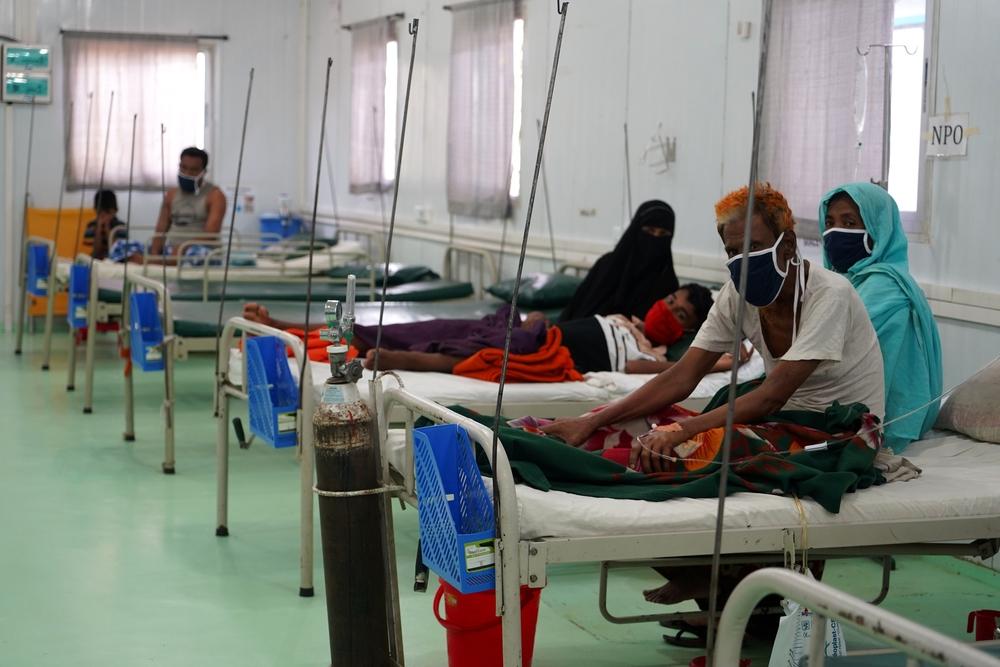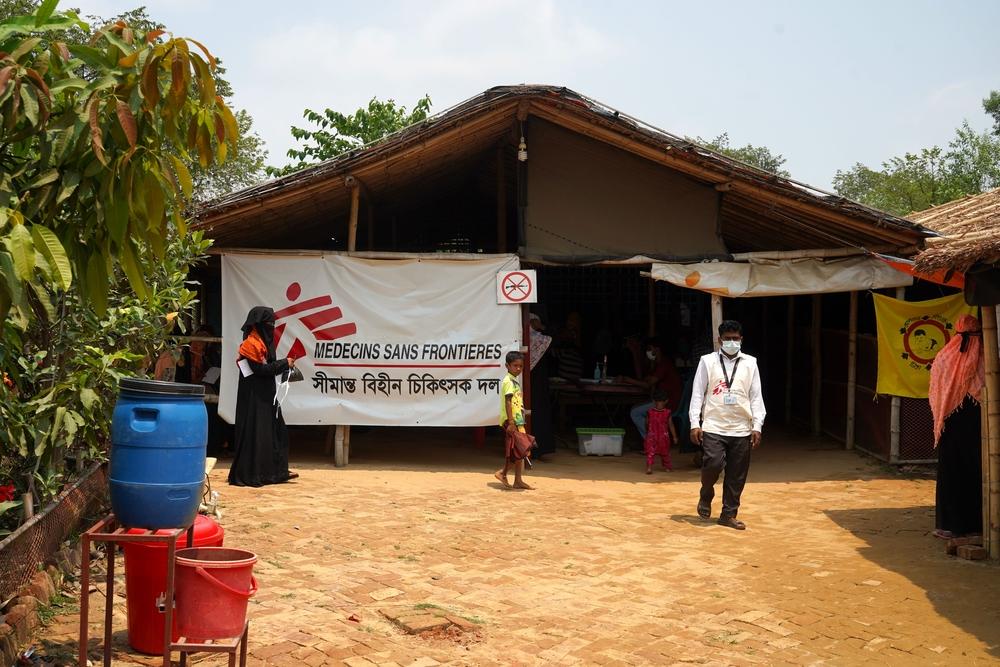Hospital on the Hill in Cox's Bazar shows diabetes and hypertension are easy to treat--if care is available

Last year, almost 2,500 patients were admitted in Doctors Without Borders Hospital on the Hill and close to 3,000 patients-–half of them, locals--are receiving regular treatment for non-chronic communicable diseases. © Pau Miranda/MSF
In April 2018, half a year after the massive influx of Rohingya refugees from Myanmar to Bangladesh, Doctors Without Borders / Médecins Sans Frontières (MSF) opened a new hospital in the heart of the vast Kutupalong-Balukhali refugee camp in Cox’s Bazar. It was quickly nicknamed “Hospital on the Hill”, describing the big structure on top of one of the many hills in the camp.
“This hospital is very important, because it is one of the very few facilities who provide secondary health care. For many refugees in the camp, it’s the only option to receive intensive or high dependency care”, says Karolina Narloch, medical activity manager. “The Hospital on the Hill specialises in non-communicable diseases (NCD) such as diabetes, hypertension or chronic pulmonary issues, which is quite unique in this setting. Without this hospital, many would die from simple diseases which are in themselves not complicated to treat.”
Last year, nearly 80,000 outpatient and emergency total consultations were provided. Around 85 patients are assisted daily for NCD treatment. The total number of active these patients in the facility is currently over 2800.

© Pau Miranda/MSF
Our NCD cohort is increasing at around 5% per month. This makes good care challenging. We have to reinforce our human resources and ensure a sufficient supply of drugs to sustain our care for the patients. In addition, many are also affected by hepatitis C. Their medical needs have been neglected in Myanmar; they didn’t have access to health care. Many people suffering from hepatitis C only come to see us very late, once they develop chronic liver diseases or cirrhosis which are very difficult to manage and dangerous.Adeola Fadumiyo, NCD medical doctor
Azizur Rahman, a Rohingya refugee who receives care in the Hospital on the Hill, confirms this. “When I came to this country, I couldn’t afford to buy medicine, I couldn’t afford them in Myanmar either,” he says.
Next to the NCD care, the Hospital on the Hill offers health care services in an intensive care unit, a medical analysis laboratory, inpatient departments for adults and children, and an isolation unit for patients with infectious diseases. Since the onset of the COVID-19 pandemic in Bangladesh, we have has scaled up our activities at the hospital and opened a separate isolation unit for patients who suffer from severe respiratory issues.
Around 40% of the consultations concerning non-communicable diseases are carried out for Bangladeshi people living in the host communities around the refugee camps. They make up around 6% of the overall consultations. Karolina Narloch says “This hospital has a huge impact on the host community. Cox’s Bazar district, where the refugee camp is located, is far away from the big cities like Dhaka or Chittagong, and the people who live here don’t have simple access to specialised medical care.”
Sujauddin Chowdhury is a former teacher who lives in a nearby community. He receives treatment for diabetes in the Hospital on the Hill.
We have hospitals in our area, but the service they provide isn’t as good. I heard good things from people who received treatment here. My relatives started to come here for treatment. And now I am here as well.Sujauddin Chowdhury, patient